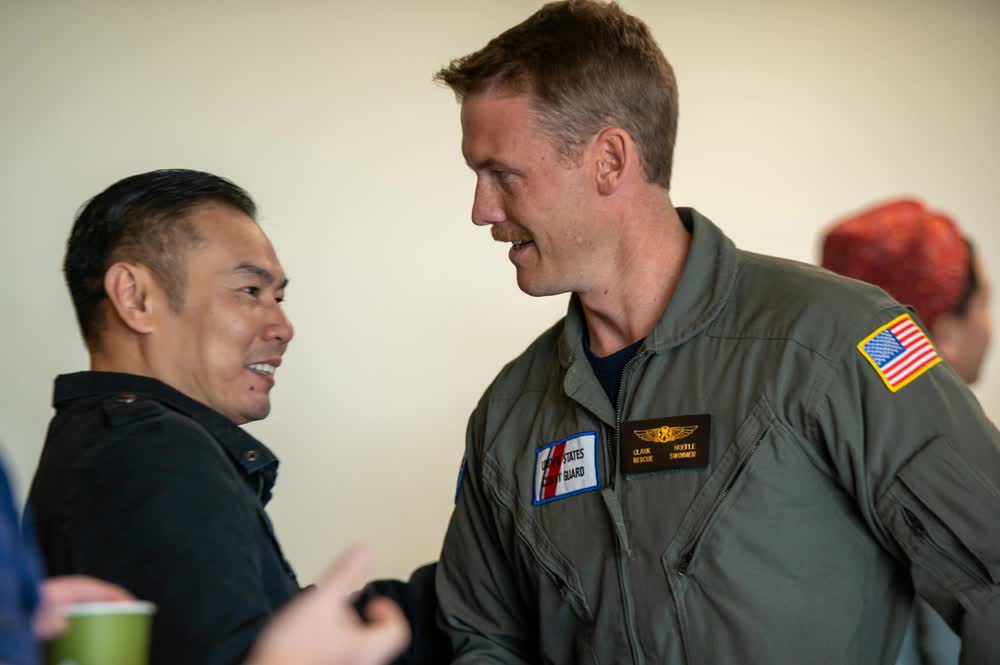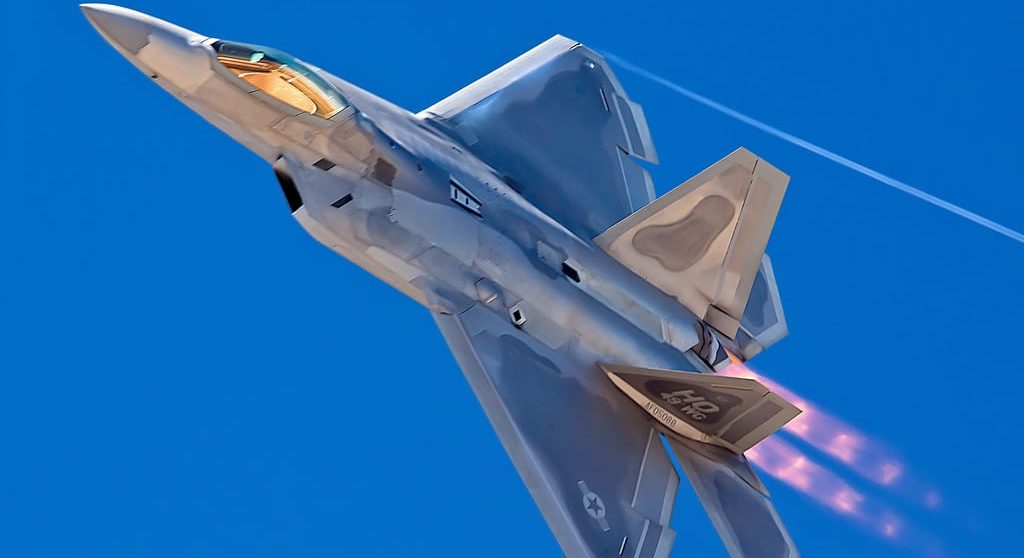Special operations forces may get a disproportionate share of the attention when it comes to grueling training and the ability to act with precision in terrifying situations.
But the U.S. Coast Guard has a small and elite contingent of rescuers that could easily contend for the title of grittiest of them all. There are only about 350 Coast Guard rescue swimmers in all. Technically known as aviation survival technicians (ASTs), because their job involves jumping from helicopters – often into freezing ocean water, and sometimes in storms – these rescuers save people no one else can reach. Up to 100 Coasties each year begin the 24-week training course, and historically more than half don’t make the cut. Some sources say that AST courses have sometimes had an attrition rate of 85 percent, which would make the course comparable to the Basic Underwater Demolition/SEAL (BUD/S) training, with its average attrition of 68 percent.
While Coast Guard rescue swimmers got the Hollywood treatment in the 2006 action film The Guardian, it’s fairly rare to hear the swimmers themselves describe their critical saves.
But last December, Aviation Survival Technician Second Class Spencer T. Manson received the Distinguished Flying Cross, an award reserved for acts of heroism in aviation, for saving six people from a disabled schooner off the California-Oregon Coast. Here is his story, and two others, that provide a glimpse into the fearless work of Coast Guard rescue swimmers.
“I was thinking to myself, ‘I can’t let go”’
When the distress call came in to Coast Guard Sector Humboldt Bay in the afternoon of June 19, 2021, conditions were troubling. The 79-foot sailboat Barlovento was stuck and taking on water some 80 miles off the coast, and one of the six passengers aboard was injured, with a broken arm and a head injury. On top of that, conditions were choppy: winds were whipping around the boat at nearly 60 miles per hour, and waves were topping 20 feet.
It was Spencer Manson’s first rescue, and he knew what he had to do.
In light of the injured passenger onboard and the water seeping onto the boat, “it was important to respond as quickly as possible,” he said in a Coast Guard video released in December 2023.
The rescue range was a challenge for the Coast Guard’s MH-65 Dolphin helicopters. As aircraft commander Lt. Ryan O’Neill put it, “everything had to go right.”
When the chopper arrived on scene, Manson clocked several ropes dragging behind the schooner, which looked tiny amid the high waves. Lowered from the aircraft to the water on a rope, Manson disconnected himself from the line ensuring his safety, and reached the boat, taking hold of the trailing ropes and holding on for all he was worth.
“I was thinking to myself, ‘I can’t let go; we don’t have time for that,'” he said in the video. “I knew I only had a few minutes to get the patient, get in the water, swim to the basket, and get out of there.”

The mission went exactly as it needed to go. Manson loaded up the injured woman and rode with her in the basket up to the helicopter. A second chopper arrived on scene, along with a C-27J Spartan turboprop aircraft. Together, they plucked the remaining passengers from the water one by one and returned to home station to treat them.
“They make it hard for a reason,” he said of his AST training. “They let the people who they know aren’t going to give up get through. because you’re going to be in situations where you can’t give up. You have to make it happen.”
Related: Coast Guard saves huge Goonies fan who had stolen yacht
‘That baby was not going anywhere’
Aviation Survival Technician Third Class Tyler Gantt was another brand-new rescue swimmer in 2017, when Hurricane Harvey brought devastating flooding to Houston, Texas. But he wasn’t about to reveal that to the stranded and scared Texans who waited on rooftops for him to come pick them up.
“I had people asking me, ‘You’ve done this before, right?'” Gantt recalled in a 2023 interview with Fox 26 Houston.
He tried to keep his response laid-back.
“Oh yeah, I’ve been to a ton of hurricanes that hit major cities. This was just another Tuesday,” he said of the impression he gave. “But actuality, like, this is insane.”
Gantt was the first rescue swimmer deployed to the Houston disaster zone. During one night, he braved torrential rain and winds of more than 90 miles per hour to save a critically ill pregnant woman who was trapped in her attic. He had to descend more than 150 feet from an MH-65 helicopter through a small opening between active power lines to rescue the woman and her family one by one in the punishing conditions.

In the TV interview, though, Gantt described another rescue. In this case, a man wading through fast-moving water and holding an infant in his arms tripped or lost his balance, losing control of the infant. Gantt, who saw everything happen from the rooftop he was standing on, immediately jumped into the water, grabbing the baby before it could be carried off.
“There was never a time in my life where I have not wanted to drop something so badly,” Gantt said. “That baby was not going anywhere. I was holding on so tight.”
Ultimately, Gantt was credited with rescuing 59 people during his Houston mission. In December 2019, he received the Distinguished Flying Cross for his “extraordinary heroism.”
Related: Coast Guard boot camp: Everything you need to know
‘They realized they had all just survived the worst day of their life’
For Aviation Survival Technician Second Class Richard Hoefle, 2022 was a landmark year for lives saved. That year, the New Orleans-based rescue swimmer participated in four different rescues dramatic enough to make headlines, including one that the Coast Guard would nickname “Sharknado.”
This rescue was deadly serious: In October 2022, the Coast Guard was alerted to the case of three fishermen in the Gulf of Mexico who’d departed from Venice, Louisiana, but failed to return home. Their vessel had sunk, leaving them in the water waiting for rescue and fending off aggressive sharks who shredded their life vests and left them with bites that cut to the bone. The men had been in the water for more than 24 hours when one was finally able to send out a text message with their location, allowing the Coast Guard to reach them.
Hoefle deployed for the rescue along with a fixed-wing C-27 out of Corpus Christi, Texas.
“After we had hoisted the first person, they had all been separated in the water, so they didn’t know if their buddies had survived or not,” Hoefle said in a Coast Guard video released in 2023. “When the first survivor saw the second survivor come into the aircraft, I got to see a sense of joy and relief. And when the basket went down again, and his next buddy came into the aircraft, I got to see that sense of joy and satisfaction.
“They realized they had all just survived the worst day of their life.”
Related: These are the Coast Guard’s special operations forces

Hoefle’s other 2022 rescues included “The Thanksgiving Miracle,” a November 26 rescue in which he recovered a passenger who’d fallen overboard from the Carnival Cruise Ship Valor and had fought to survive for four hours without any flotation device.
“As I swam up to the survivor, I handed him the rescue sling and he collapsed into it,” Hoefle said. “I honestly think that he had a minute if not 30 seconds left before he succumbed to his battle.”
The same year, he also conducted two rescues of helicopter crash survivors. One of these rescues, on October 26, would earn him the prestigious Air Medal. The crash, 75 miles southwest of Air Station New Orleans, involved two injured survivors aboard the overturned wreckage of a crashed helicopter at night, the water around them filled with toxic fuel and hydraulic fluid. Meanwhile, the helicopter Hoefle rode in was getting low on fuel. Without concern for his own safety, Hoefle decided to enter the slick and hazardous water twice, sustaining injuries in the process.
But the rescue was a success: both passengers were safely evacuated to the helicopter, where Hoefle administered medical care.
“That’s why I joined the service. I wanted to help people,” Hoefle said in the Coast Guard video. “When you get to bring a mom or dad back to their family, that’s why we do this.”
Read more from Sandboxx News
- How the Thompson SMG helped shape modern warfare
- Northrop Grumman’s Manta Ray submarine could be a boon for anti-submarine warfare
- Special Forces engineers are training to dig ditches and destroy tanks
- The replacement of the Marines’ problem-ridden AAVs arrives
- AI-piloted F-16 takes on human pilot in ‘complex dogfights’




